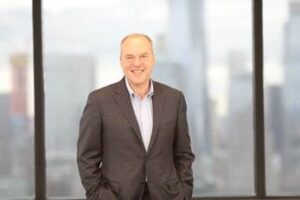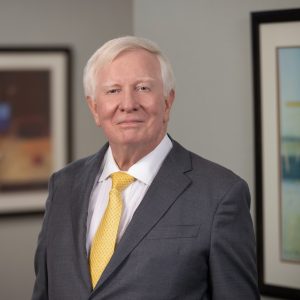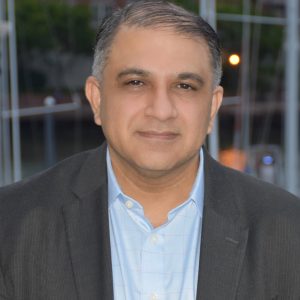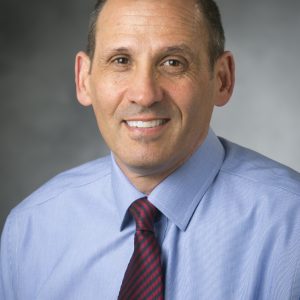Scynexis CEO Shares Strategies for Reorganizing, Refocusing Biopharma Company

 Marco Taglietti, M.D.
Marco Taglietti, M.D.
President and CEO of Scynexis
When Marco Taglietti, M.D., decided to retire in 2014 at age 55, it was after a long and successful career in the biopharma industry. As the head of research and development at Forest Laboratories, he oversaw the approval of 10 New Drug Applications (NDA) in seven years. When Actavis bought Forest in 2014, it seemed to be the right time to take a step back.
Dr. Taglietti didn’t remain retired for long.
He did some consulting and joined the boards as independent Director of a few biotech companies, including Scynexis in 2014, which develops anti-infective therapies for difficult-to-treat and often life-threatening infections. When the board asked him in 2015 if he would be interested in running Scynexis as CEO, Dr. Taglietti found himself jumping at the chance. “At that point, honestly, I had realized that retirement is overrated,” laughed Dr. Taglietti.
Scynexis has just submitted its first NDA for ibrexafungerp, the first representative of a novel oral and intravenous triterpenoid antifungal family, which is expected to receive approval in mid-2021.
In an interview with Ashton Tweed, Dr. Taglietti talks about leading a company during the COVID-19 pandemic, the easiest way to redirect an organization’s focus, and why listening may be one of a CEO’s most important skills.
Ashton Tweed: Has COVID-19 had an impact on your company operations?
Marco Taglietti: On the operations, for sure, in the sense that we closed the office back in March. I’m an infectious disease specialist, so in early March, I realized that this was going to be bad so we started to have everyone working from home and we’re still working remotely.
However, the good news is that it didn’t really impact our effectiveness. Actually, we were able to close our Phase III program earlier than anticipated. We filed the NDA sooner than we were actually expecting. And overall, activities have been moving extremely, extremely well. The team is very committed.
Sometimes, I believe that people have been working harder at home for two reasons. First of all, they don’t waste time in the commute. And second, they probably want to keep things this way. Since we have communicated to employees that we will continue to work remotely until the end of March 2021, I will have a hard time giving them a rationale for why should we go back to the office. [He laughs.]
AT: What has been your biggest challenge as CEO of Scynexis?
MT: The big challenge, honestly, was transforming the company from a contract manufacturing organization to a biotech company. So, it was a contract-driven type of organization. Scynexis had antifungals in Phase I, but at a certain point, the board decided it was time to develop them.
This is why I got involved, because the board wanted Scynexis to become a true biotech company. So, when I became the CEO, I had to change the skill set of the company. I sold the manufacturing business, which was not very profitable. I shifted some of the skill sets being from a contract-driven type of approach to a more biotech development approach. Our company now has about 40 employees and it’s a completely new team.
The challenge was to make this shift while continuing to develop the product without missing a beat. We were able to transition to the current team and we actually changed the composition of the board to reflect the kind of skill sets required by a biotech company. And now we are able to pick the fruits of our hard work.
AT: How did you change the organization’s skill set during its transition?
MT: I found that when you have to make a big transition, there are a couple of challenges. The first one is that the people who are on board with the change happening become the legacy employees. New hires become the new employees and a difficult relationship forms at times between these two groups.
So, what I did—and I’ve done it more than once in my career when I had to make a significant structural reorganization—I moved the company. That’s what I found to be the easiest way.
I took the company, which had been based in North Carolina for 15 years, and I moved it to New Jersey. I handpicked the people, the current employees of Scynexis, that I wanted to join us and I brought in new people. Now, at that point, in a new location, there are no legacy employees. Everyone is new.
It works very well because I am a true believer that humans are really creatures of habit. Even if you change an organization and you start to change the culture, if the person who has been working there for 10 years continued to go to the same office, in the same place, in the same room, sitting in the same chair, it’s difficult to make them change and understanding the changes.
Whereas, when you bring everyone in to a new place it works very well. The transformation is quick because there are no more legacy employees or new employees. Everyone is new—in a new environment in a new office, at a new desk with a new chair. They now look at the world in a new way and everyone works together to see how they can contribute.
AT: For people who are aspiring to be a CEO at a pharmaceutical company, what other lessons have you learned?
MT: You have to be a listener, and let me just say that is very difficult for an Italian. [He laughs.] Because, first, as a CEO, you are in charge of areas where you have really little expertise. Second, you have to listen before making it clear what your own idea is. Listening to your team allows them to brainstorm and come up with different ideas so you can pick the best ones.
The moment you talk, 80 to 90 percent of employees shut their mind. They just say, “Okay, he spoke. That’s the way we’re going to do things.” But, sometimes it’s been so good for me to bite my tongue and think, “Okay, let the brainstorming continue among my team, so I can listen to what they are suggesting.”
AT: Do you have an example of how this strategy has worked for you?
MT: We have ibrexafungerp, an antifungal with great versatility. With my training in infectious disease, I’m very excited to develop this product for the hospital setting. But at a certain point, my team came to me with the idea of developing a different indication.
Their new indication idea was vulvovaginal candidiasis, also called vaginal yeast. And, I’ll tell you, as an infectious disease specialist who has been treating difficult, life-threatening infections in very sick patients, my first reaction to vaginal yeast was to tell my team, “Nah, don’t waste your time.”
But I was able to bite my tongue and let my team brainstorm the idea. And you know what? Our first NDA will actually be for vaginal yeast!
Their idea addressed a significant unmet medical need that I was unaware of, so patients and doctors were excited about joining our clinical trial to treat vaginal yeast. We are very excited to launch the drug for the treatment of vulvovaginal candidiasis and at the same time continue to develop the hospital indication.
So, as a CEO, I try to let the wisdom of the team come out and not nip it too early.
AT: What’s next for Scynexis?
MT: Now that we are a few months away from getting our product approved and then launched, we are transforming our company to be not just R&D but also a commercial organization. It’s a big transition.
Sometimes I think about the product like a child, When you develop the product it’s like when you send a child to school. When the product is approved, it is like when your child gets out of college and has a degree, and now has to do the toughest part, which is finding a job and becoming a productive citizen. Now we have to put our product out there in the world and have it earning its living. That is where we are right now at Scynexis.
Dr. Taglietti became the President and CEO of Scynexis in 2015. Previously, he served as Executive Vice President of Research and Development and Chief Medical Officer of Forest Laboratories Inc. and as President of the Forest Research Institute. Dr. Taglietti also held positions including Senior Vice President, Head of Global Research and Development, at Stiefel Laboratories Inc., and Vice President, Worldwide Clinical Research for Anti-Infectives, Oncology, CNS, Endocrinology and Dermatology at Schering-Plough Corp.
He currently serves on the Board of Directors of BioNJ, Inc. Dr. Taglietti earned his medical degree and board certifications from the University of Pavia in Italy. He lives in New Jersey with his wife. The couple has three adult children.
Question for readers: Have you had to integrate legacy employees and new employees? Do you have any tips on how you built a new, cohesive team?
#drugdevelopment #challenges #remotework #infectiousdisease #biotech





